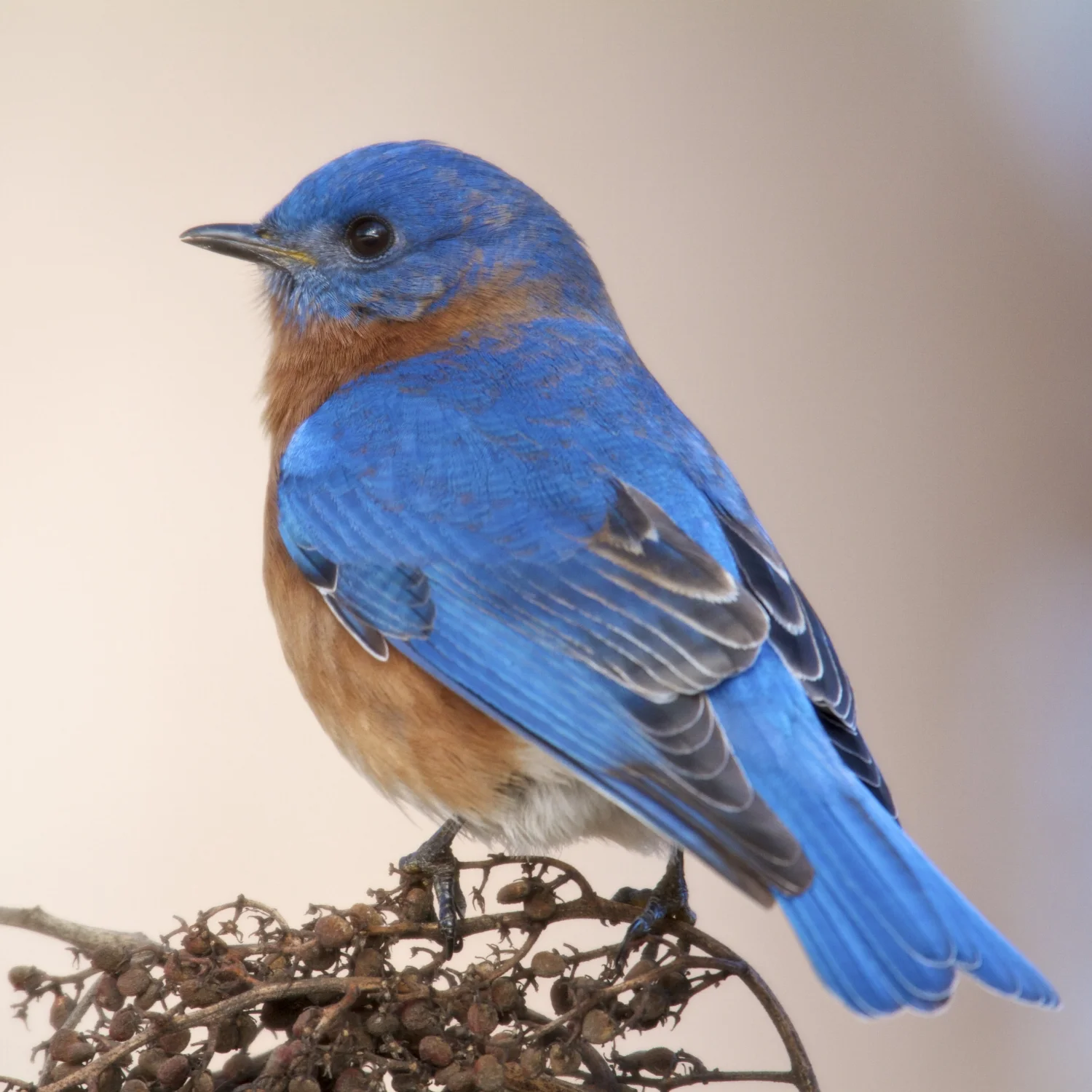Eastern Bluebirds: from survive to thrive.
HSV Audubon has worked hard for many years to protect and advance the recovery position of Eastern Bluebirds. And our plan is working!
Bluebird Monitoring
Eastern Bluebird, male - Photo Vic Prislipsky
Hot Springs Village Audubon Society began its bluebird monitoring program in 1974, when the Village was just 4 years old. John Whelan, the first General Manager of the POA, learned about the endangered status of Eastern Bluebirds and put a plan into action.
One of the primary problems for bluebird survival is that they must compete with more aggressive species for food and nesting sites. With this in mind, a program was started to introduce nest boxes in good nesting habitat.
John Whelan and about 20 other residents formed our HSV Audubon Chapter, and dedicated it to
preserving bluebirds and making the Village a bird sanctuary.
They placed about 20 bluebird nest boxes around the DeSoto Golf Course and began weekly monitoring.
Thanks go to John Whelan and his friends for a great start on preserving our bluebirds in Hot Springs Village.
Always hungry bluebird babies. Photos Vic Prislipsky
Fast forward 40+ years.
Our Bluebird Monitoring Program has grown tremendously over the years, from 20 nest boxes on 1 golf course to over 300 boxes on 9 golf courses.
We now have 40 monitors checking the boxes and recording their findings every week from April through August. Our peak years have produced almost 2000 bluebird eggs and 1400 bluebird fledglings. In addition we have counted as many as 400 other fledglings per year including nuthatches, chickadees, and titmice.
This is how we do it.
Newly hatched bluebird babies in the nest. Photo Sandy Williams, bluebird monitor.
Kathy Jurek, Bluebird Monitoring Chairperson, will get back to you on bluebird related questions.
Adolph Jaurez adds the finishing touches to a bluebird nest box.
Bluebird nest boxes
HSV Audubon Society volunteers make and sell bluebird houses to enable all Villagers to participate in the bluebird recovery effort and to expand their birding experience. The nest boxes are hand crafted and designed to help protect bluebirds from many elements and predators.
The proceeds support the bluebird recovery program, Halberg Ecology Camp and other HSV Audubon projects.
For more information, take a look at our hand crafted bluebird nest boxes and platform feeders
Call Adolph Jaurez 501-915-0201
Annual Bluebird Reports
Danger - Buffalo Gnats
In late April of 2008 bluebird monitors began discovering significant numbers of dead babies in the nests. By early May, the monitors had found over 100 dead baby birds.
In addition, several nests had abandoned eggs in them. Most of the babies were almost ready to fledge; none of them showed signs of a predator.
Finally, after two batches of dead baby birds had been sent to the National Wildlife Health Center in Madison, Wisconsin, we learned that the deaths had been caused by Buffalo Gnats.
Buffalo gnats are small, biting, bloodsucking black flies, about half the size of a house fly. They are common pests in Arkansas and many other states and can viciously attack birds, poultry, domestic and wild animals, and humans. They hatch and mature in flowing water and flourish in wet spring weather. They live about 30 days and die when summer temperatures arrive. Gnats are reported to be most active in the evening.
Jerry Barnoski applying vanilla.
Surprise Solution: Pure cooking vanilla applied to the outside of bluebird boxes seems to be the most effective deterrent. Monitors either spray the vanilla around every opening or dab a vanilla soaked cotton ball around each opening and then attach it to the nest box near the entrance. Once the buffalo gnats have been discovered, vanilla should be applied at least once each week. Twice a week is even better.
After we began using vanilla to treat the boxes, the bluebird population rebounded. Constant vigilance by the monitors continues to keep the buffalo gnat issue at bay.







